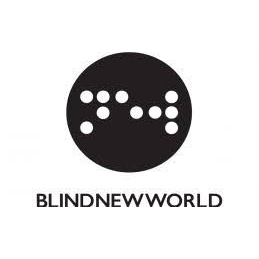
Many years ago, I worked The Great Movie Ride in Walt Disney World, where guests would go through movie scenes with audio animatronics. I narrated the scenes as a host – and later, as a gangster who gets blown up. In a sense, this was my first experience with audio description.
For movies and TV shows, audio description (also known as video description) is a special audio track where a narrator voices the visuals relevant to the plot. It’s intended for blind and low-vision audiences to experience the film or TV show by hearing what’s happening on-screen, usually with narration in between lines of dialogue.
It works like a sports announcer on the radio, giving the play-by-play of what’s happening on screen. The narration describes visual elements, such as actions, settings, body language, graphics and subtitles.
I started working in audio description a little more than five years ago, narrating some IMAX and Disney short form titles, like Toy Story of Terror. Since then, I’ve recorded the latest two Spider-Man movies, Hobbs & Shaw, Glass, Jurassic World: Fallen Kingdom, and several network and streaming series like NCIS, Marvel Runaways, and Amazon’s Bosch.
What Happens Behind the Scenes?
My experience as a narrator is limited to being in a booth recording into a microphone. I watch the TV show or movie on a screen and hear the audio in a headset, and read from a script. The script is written by describers. Those describers take the original film and watch it, noting the essential plot points that are visual. They find the best words that don’t get in the way of the scene, and find the best place in the scene to put those words.
I arrive to the studio, I’m given the audio description script, and we start rolling. I’m reading the script having never seen it before.
While I know the general gist of the movie or TV show, I’m also along for the ride. My goal as a narrator is to get out of the way to not distract the audience from immersing themselves emotionally. In other words, if an audience is aware of me, I’m not serving the story. To serve the story, I need to ride the emotional elements, but not too much or not too little. I also have to keep an eye out for timing issues, reading quickly at some parts, and slowing down on others. And any surprises need to be revealed in a way that a sighted audience person would experience it.
Advocating for Audio Description
I’ve recently been connecting with blind and low-vision audiences and others, through the Facebook group Audio Description Discussion, the Audio Description Project, connecting on Twitter, and advocating for those producers or directors unaware of audio description. For those who aren’t aware, I find they lean in, with curiosity and wonder.
This is a market share of our industry that can reward all those who participate in it, and I do my best to find the positive steps being taken.
Roy Samuelson is a top Hollywood voiceover artist who has been heard in television commercial spots for Quaker, State Farm, Direct TV, Ford, Target, McDonald’s and more. He has been featured in hundreds of spots for Los Angeles’ KCRW-PBS Radio. Currently he is one of the leading voiceover artists leading the industry in Descriptive Narration, enabling members of the blind and visually impaired to enjoy film and television. You can learn more about his work on his website, RoySamuelson.com and follow him on Twitter.
